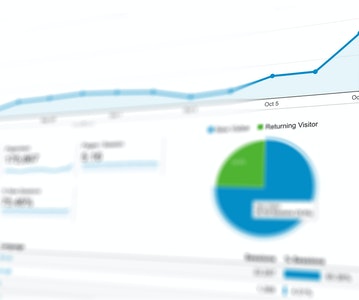This article is about Data Science
A Beginner's Guide to Data Mesh Architecture
By NIIT Editorial
Published on 26/06/2023
Data Mesh Architecture (DMA) is a novel strategy for creating and managing large-scale data systems that seeks to address some of the limitations of more conventional, centralised approaches. Instead of having a single group responsible for managing all of the organization's data, Data Mesh Architecture distributes ownership of the data across the many product teams. In this method, data is divided into smaller, more manageable pieces, each of which is the responsibility of a separate product team.
Data Mesh Architecture is valuable because it solves problems with conventional centralised data architectures, such as a lack of scalability, agility, and adaptability. Data Mesh Architecture allows businesses to better expand their data systems, adapt fast to changing business demands, and enhance the quality and accuracy of their data by decentralising data ownership and management.
Data Mesh Architecture was initially described in a blog post by Zhamak Dehghani, a software architect at ThoughtWorks, in May of 2020. C. A brief history and progress of Data Mesh Architecture. The idea has now gone viral, with more and more businesses embracing it. In light of the increasing complexity and variety of today's data systems, as well as the inadequacies of more conventional, centralised data designs, the emergence of Data Mesh Architecture makes perfect sense.
Table of Contents:
- Understanding Data Mesh Architecture
- Implementing Data Mesh Architecture
- Best Practices for Data Mesh Architecture
- Conclusion
Understanding Data Mesh Architecture
1. Components of Data Mesh Architecture
- Data Products: Each product team in the Data Mesh Architecture is responsible for the ownership and management of their respective product's data. Data products, including their underlying schemas, access patterns, and quality criteria, are defined by these groups.
- Domain-Oriented Data Governance: To guarantee that data is gathered and handled in a manner that is consistent with the requirements of the business, domain-oriented data governance makes use of domain experts. Each product team's output will be of excellent quality and usable for making decisions if this method is used.
- Federated Data Stores: Data may be stored and managed by product teams in isolation from other teams using federated data stores. This means that teams may choose the finest data storage technology for their requirements, allowing for more versatility and responsiveness in data management.
- Data Services: Accessing and using data products is made easier with the use of a standardised interface provided by Data Services. These services make it simple for product teams to exchange data with one another, while guaranteeing constant and dependable data access.
- Self-Service Data Platform: Teams may manage and distribute their data products with the help of a Self-Service Data Platform. This encompasses the ability to receive data, store data, process data, and send data.
2. Advantages of Data Mesh Architecture
- Better Scalability: By delegating data management to individual product teams, Data Mesh Architecture helps companies quickly grow their data systems.
- Improved Data Quality: Data Mesh Architecture aids in ensuring reliable data for making decisions by enlisting the support of subject matter experts throughout the data governance process.
- Greater Agility and Flexibility: Organisations may adapt rapidly to changing business demands with the help of Data Mesh Architecture, which facilitates self-service data management inside product teams.
- Enhanced Collaboration and Productivity: By removing the need for a centralised data team, Data Mesh Architecture improves cooperation and output by empowering product teams to take charge of their own data.
3. Differences between Data Mesh and Traditional Centralized Architecture
- Ownership of Data: When compared to the more common centralised design, Data Mesh design places data ownership and management in the hands of individual product teams.
- Data Governance: Data Mesh Architecture differs from conventional centralised architecture in that it does not rely only on a centralised data team to maintain data governance.
- Data Sharing: In contrast to conventional centralised design, Data Mesh design makes it simple for product teams to exchange their data with other teams.
- Data Processing: Whereas in conventional centralised design, data processing is often done using a single technology stack, Data Mesh design allows product teams to pick the optimal data processing solution for their requirements.
Implementing Data Mesh Architecture
1. Preparing for Implementation
- Evaluating Business Needs: Assessing the unique business requirements that the Data Mesh Architecture will meet is a crucial first step before putting it into action. The goals, necessary domain knowledge, and expected outputs of the architecture's implementation must all be determined.
- Assessing Data Maturity: In order to properly use Data Mesh Architecture, it is also crucial to assess the organization's data maturity level. Data governance, data quality, and data management are only few of the aspects of this that need to be evaluated.
- Identifying Key Stakeholders: Key stakeholders, such as product owners, domain experts, data engineers, and data architects, should be identified before the implementation process begins.
2. Step-by-Step Guide to Implementation
Data Mesh Architecture begins with a definition of the data products and domains that will be utilised for data management and organisation. The first step is to determine the domains that will fall within the purview of each product team, and then to determine the particular data products that will be created by each team.
- Building Domain-Driven Data Teams: After data products and domains have been specified, domain-driven data teams may be formed to take on the task of data management and upkeep. These groups need to be multidisciplinary, with domain experts and data engineers working together.
- Establishing Federated Data Stores: Data management and storage inside each domain is handled by a federated data store. These databases need to be adaptable and expandable so they can work with other data stores in the framework.
- Setting Up Data Services: Data services provide uniform entry points for reading and writing information across disciplines. These services need to be built with reusability and scalability in mind so that they may be seamlessly integrated with others in the architecture.
- Creating a Self-Service Data Platform: A self-service data platform is a hub where all of an organization's data may be accessed and managed. The goal is to increase cooperation and output, thus it's important that this platform be user-friendly and open to everyone involved.
- Testing and Refining the Architecture: Finally, the Data Mesh Architecture should be put through its paces to verify it is effective in fulfilling the business's goals and producing the expected results. Making changes to the data products, domains, or data services, or giving extra training and assistance to stakeholders, might all be part of the process.
Best Practices for Data Mesh Architecture
1. Data Quality and Governance
- Monitoring Data Quality: The accuracy, completeness, and consistency of data across domains must be constantly monitored. To do so, it may be necessary to implement data quality measurements and procedures for tracking down and fixing data problems.
- Ensuring Data Privacy and Security: When adopting Data Mesh Architecture, data privacy and security must be given high importance. Methods like encrypting data and limiting access are examples of this kind of measure.
- Establishing Data Governance Policies: Organisations need data governance rules to guarantee data is handled consistently and ethically. The first step is to determine who owns the data, how it will be used, and who will have access to it.
2. Data Collaboration and Productivity
- Encouraging Cross-Functional Collaboration: Data Mesh Architecture relies heavily on coordinated effort. One way to do this is to encourage cross-departmental cooperation based on common data products and areas of expertise.
- Promoting Data Literacy and Skills: Employees in a Data Mesh Architecture setting need to be well-versed in data and the technologies that deal with it in order to do their jobs effectively. Employees' data literacy and skillsets may be improved via the provision of appropriate training and supporting materials.
- Measuring and Tracking Productivity: The success of a Data Mesh Architecture implementation depends on its ability to assess and monitor efficiency. Metrics and key performance indicators (KPIs) may be put up to monitor the success of data products and domains, allowing for the identification of problem areas.
3. Data Mesh Tools and Technologies
Data integration tools, data quality tools, data governance platforms, and self-service data platforms are just some of the tools and technologies that may be utilised to create Data Mesh Architecture.
- Examples of Data Mesh Tools and Technologies: Data mesh technologies and tools include Kafka, Flink, Druid, and Superset from the Apache Software Foundation.
- Choosing the Right Tools and Technologies: Data Mesh Architecture tools and technologies should be selected with characteristics like scalability, interoperability, and usability in mind. To make sure the chosen resources and technology are appropriate for the business, it is essential to have key decision-makers involved.
Conclusion
The Data Mesh Architecture is a decentralised framework for managing information across departments and industries. A self-service data platform, federated data storage, data services, and data products are all required for this. There is a wide variety of best practises that must be followed in order to successfully implement Data Mesh Architecture. These practices include data quality and governance, data collaboration and productivity, and the selection of the appropriate tools and technology.
Although Data Mesh Architecture has just recently emerged as a method for organising data, it has quickly been widely used. It is expected that Data Mesh Architecture will become more relevant in the future as organisations continue to struggle with the difficulties of handling vast and complicated data collections.
The use of Data Mesh Architecture is a radical departure from traditional methods of data management. New methods and tools, such as domain-driven data teams, federated data stores, and self-service data platforms, are necessary for success. Consider enrolling in a data science school or training programme to learn more about Data Mesh Architecture and get the skills necessary to apply this strategy.
Consider enrolling in a data science course to get knowledge about Data Mesh Architecture and the knowledge and abilities to put it into practice. There are a plethora of great resources, both online and off, that may help you acquire the information and abilities you need to thrive in this dynamic and ever-changing industry.


















































































































































































































































































































































































































































































